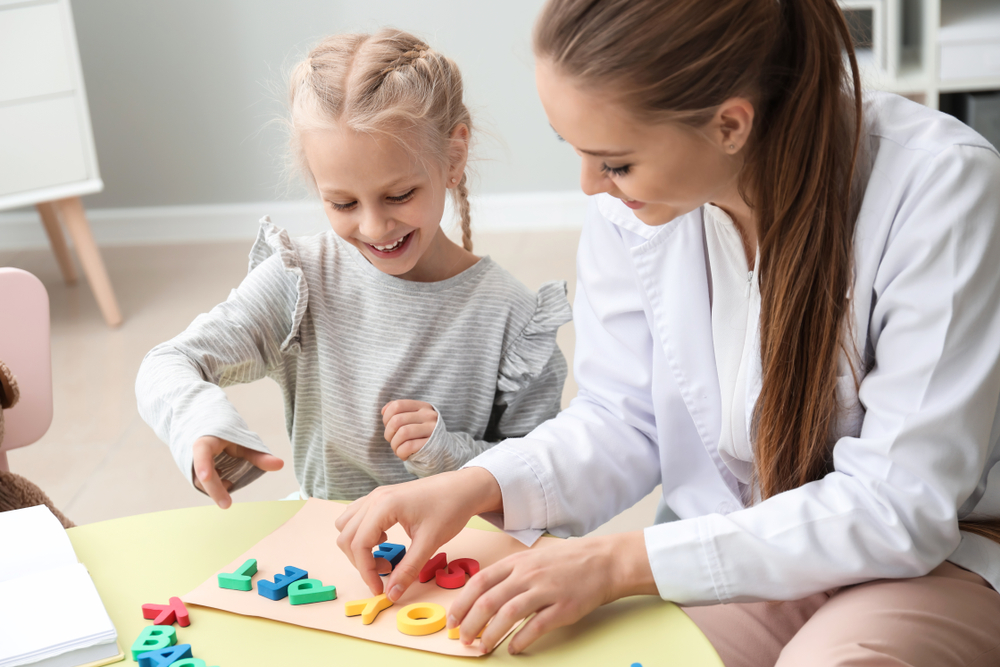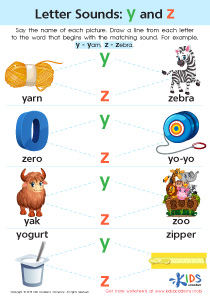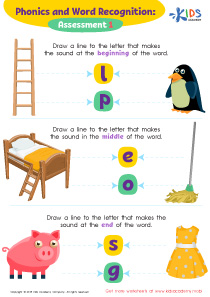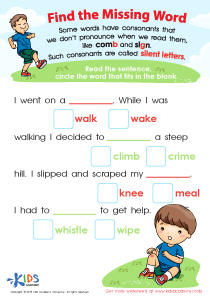Reading comprehension Normal Rhyming Worksheets for 4-Year-Olds
4 filtered results
-
From - To
Enhance your child's reading skills with our engaging Normal Rhyming Worksheets designed specifically for 4-year-olds! These worksheets combine fun and learning, focusing on improving reading comprehension through enjoyable rhymes. Each activity encourages children to identify words that sound alike, fostering phonemic awareness and vocabulary development. Our colorful, interactive materials make it easy for young learners to grasp essential literacy concepts while enjoying the process. Perfect for home or classroom use, these worksheets support early literacy and keep kids engaged. Download and explore our diverse range of rhyming activities, and watch your child's confidence in reading grow!
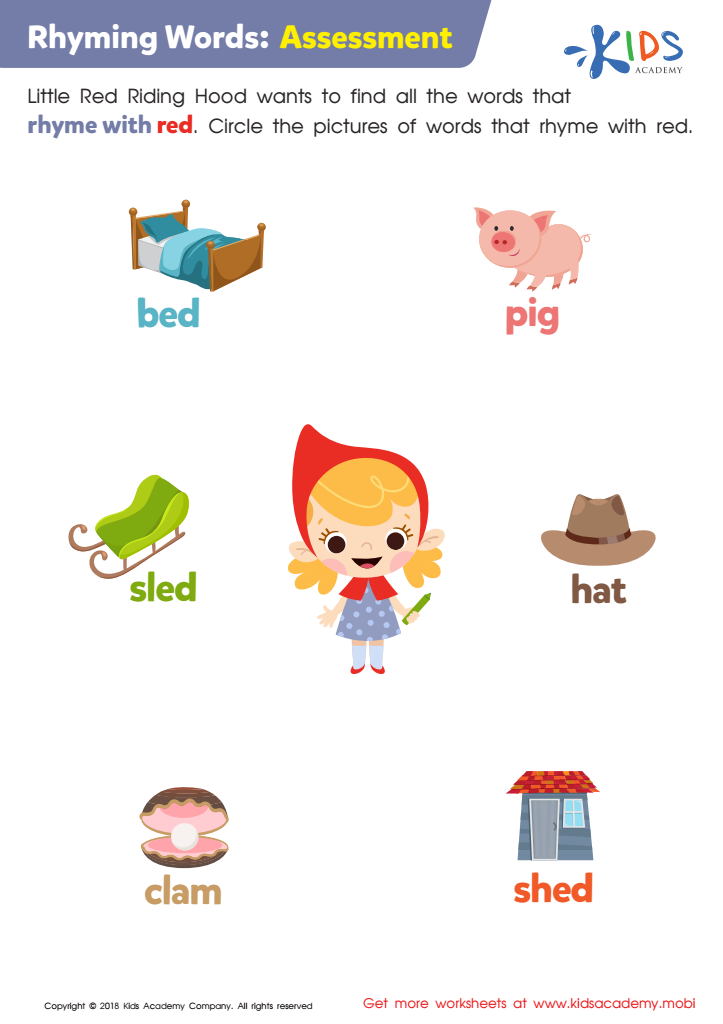

Rhyming Words: Assessment Worksheet
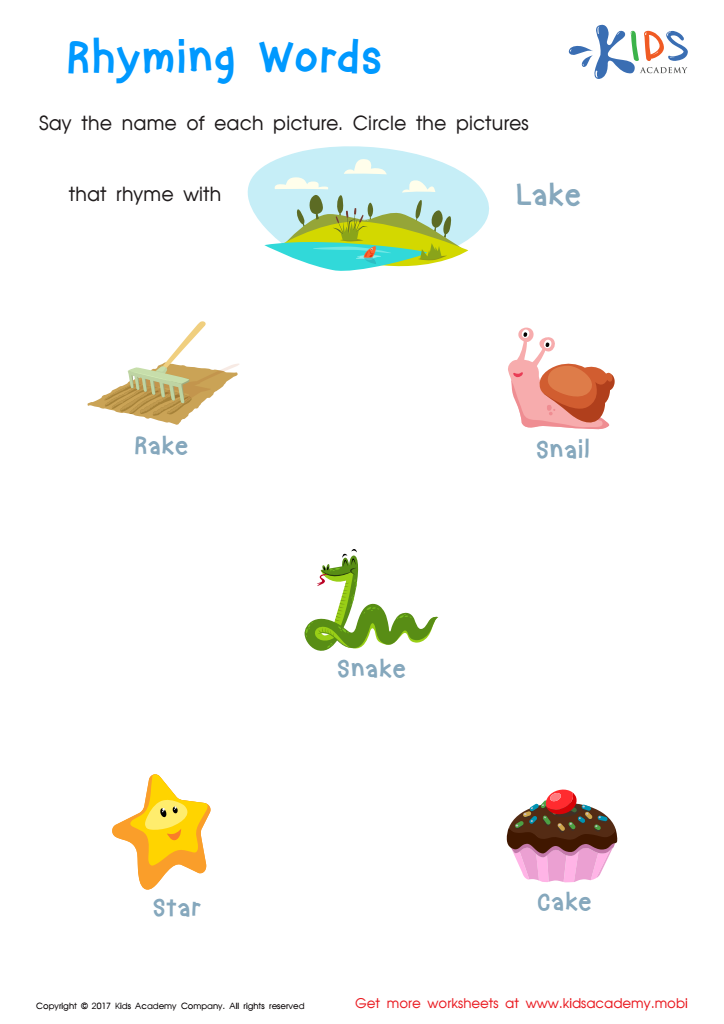

Rhyming Words Rhyming Worksheet
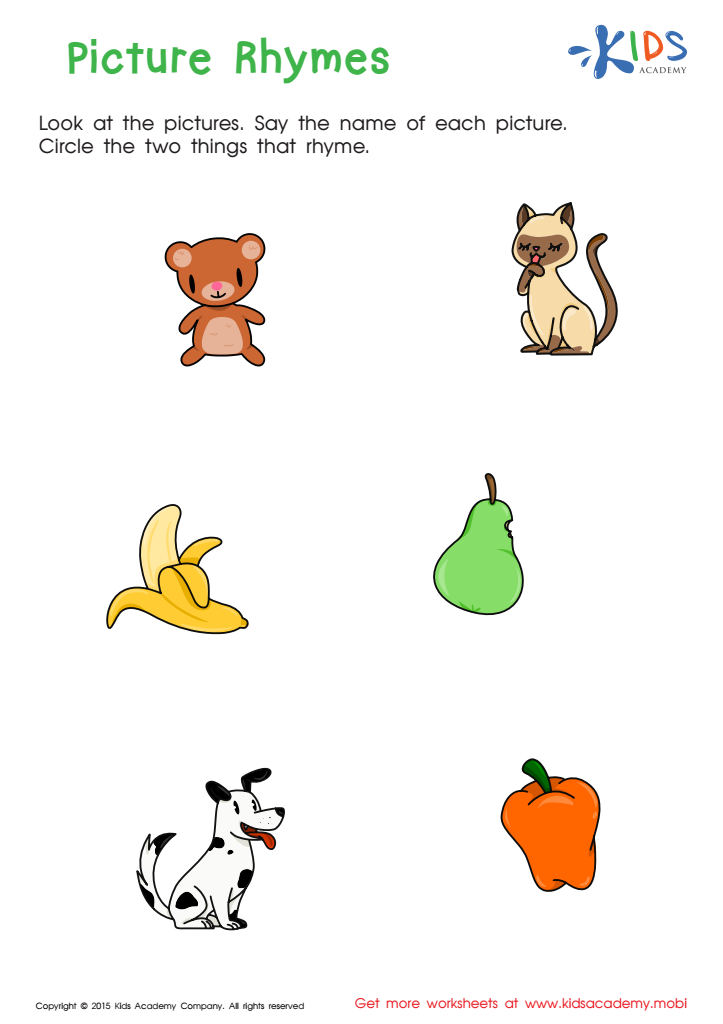

First Words: Picture Rhymes Worksheet
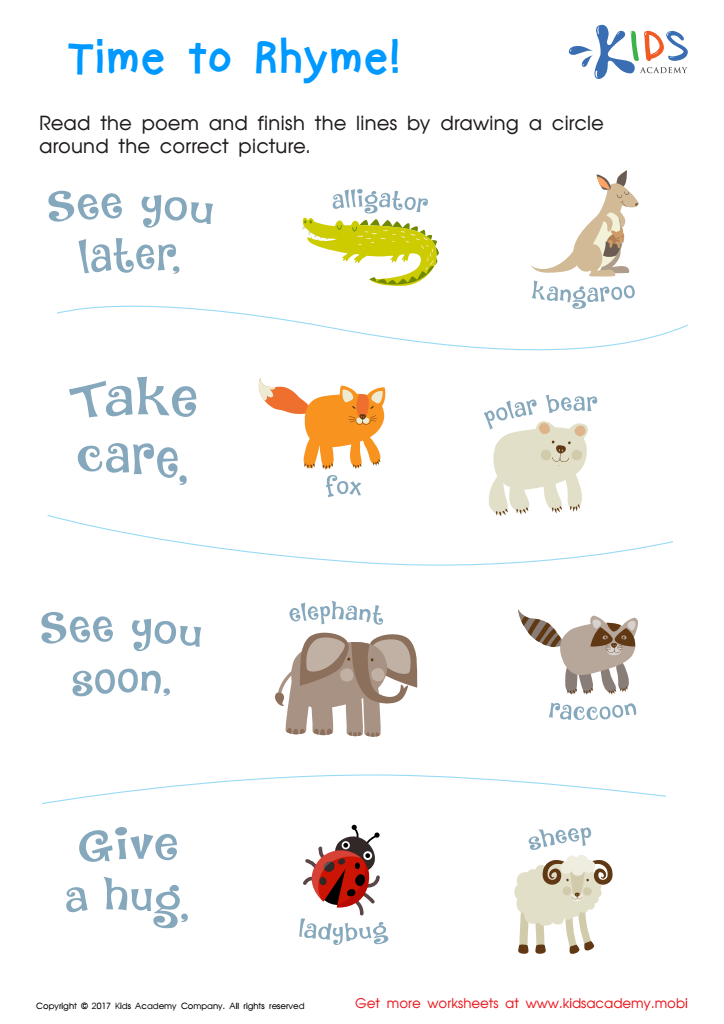

Time to Rhyme Rhyming Worksheet
Reading comprehension and rhyming are crucial elements in early childhood development, especially for 4-year-olds. At this age, children are beginning to understand language structure and develop their literacy skills. Teaching them about normal rhyming not only enhances their phonemic awareness but also fosters their ability to decode words and comprehend sentences.
When parents and teachers engage children in reading rhyming books, they expose them to new vocabulary and concepts in a fun, memorable way. Rhyming words help children predict what comes next in a text, strengthening their understanding of narrative flow. Moreover, this linguistic play encourages critical listening and speaking skills, as children can recite rhymes and engage in discussions about stories.
By caring about reading comprehension and normal rhyming, parents and teachers create a solid foundation for children’s future reading and writing abilities. This early investment in literacy contributes to a lifelong love of reading, sparks creativity, and enhances cognitive development. Understanding the patterns in rhymes also cultivates a sense of rhythm and sound, which are essential for later academic success. In short, helping 4-year-olds with reading comprehension and rhyming sets them on a path towards becoming confident readers and learners.
 Assign to My Students
Assign to My Students









